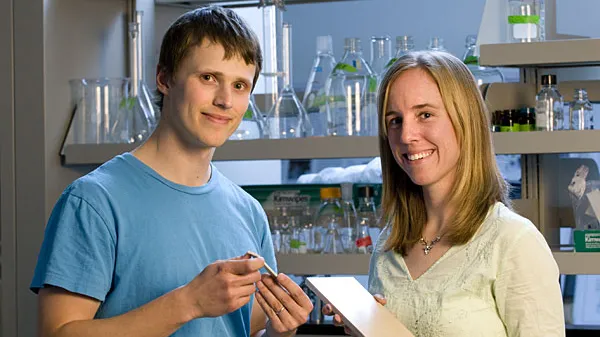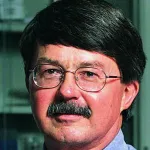
Stanford Report - March 18th, 2009 - by Mark Shwartz
Stanford University researchers have developed a synthetic wood substitute that may one day save trees, reduce greenhouse gas emissions and shrink landfills.
The faux lumber is made from a new biodegradable plastic that could be used in a variety of building materials and perhaps replace the petrochemical plastics now used in billions of disposable water bottles.
"This is a great opportunity to make products that serve a societal need and respect and protect the natural environment," said lead researcher Sarah Billington, an associate professor of civil and environmental engineering.
The faux lumber is made from a new biodegradable plastic that could be used in a variety of building materials and perhaps replace the petrochemical plastics now used in billions of disposable water bottles.
In 2004, Billington and her colleagues received a two-year Environmental Venture Projects (EVP) grant from Stanford's Woods Institute for the Environment to develop artificial wood that is both durable and recyclable. The research team focused on a new class of construction material called biodegradable composites, or "biocomposites"—glue-like resins reinforced with natural fibers that are made from plants and recyclable polymers.
Billington's group began by testing a number of promising materials. The best turned out to be natural hemp fibers fused with a biodegradable plastic resin called polyhydroxy-butyrate (PHB). "It's quite attractive looking and very strong," said EVP collaborator Craig Criddle, a professor of civil and environmental engineering. "You can mold it, nail it, hammer it, drill it, a lot like wood. But bioplastic PHB can be produced faster than wood, and hemp can be grown faster than trees."
The hemp-PHB biocomposites are stable enough to use in furniture, floors and a variety of other building materials, he added. To degrade, it must be kept away from air—e.g., buried in a landfill—because its decomposition depends on microorganisms that live in anaerobic environments.
"The ideal is to have nice, stable material when it's being used," Criddle explained. "But when it's out of use, it goes to a landfill, degrades quickly, and is reprocessed into new material that stays in a nice, stable form."
Unlike wood scraps that can sit in landfills for months or years, hemp-PHB biocomposites decompose a few weeks after burial. As they degrade, they release methane gas that can be captured and burned for energy recovery or re-used to make more biocomposites.
"It dawned on us that there are microbes that can make PHB from methane," Criddle said. "So now we're combining two natural processes: We're using microbes that break down PHB plastics and release methane gas, and different organisms that consume methane and produce PHB as a byproduct."
It's the ultimate in recycling, he said: "In our lab, we create conditions where only those organisms that accumulate the most plastic can reproduce. We call the process 'survival of the fattest,' and we have a patent application for it."
Capturing methane has the added benefit of combating climate change, Criddle said, noting that methane gas from landfills and other sources is a powerful global warming agent, 22 times more potent than carbon dioxide gas.
One reason that biodegradable plastics aren't widely used is cost. "We're competing with polypropylene and polyethylene, two really cheap petrochemical products," Criddle said. "Most bioplastics are made using sugar from corn and other relatively expensive materials. But our process uses methane in the biogas from landfills and wastewater treatment plants, which is essentially free."
The potential of producing low-cost, recyclable biocomposites has caught the attention of the private sector. In the next few months, the researchers expect to form a new startup company with venture capital funding.
nterest in the hemp-PHB biocomposites has moved beyond artificial wood products. In 2008, the research team was awarded a three-year, $1.5 million grant from the California Environmental Protection Agency to develop biodegradable plastics to replace the petrochemical plastics that are used to make disposable water and soda bottles. According to Cal/EPA, plastic bottles accumulate in landfills, the open ocean and coastal areas, causing major problems for birds, mammals and other marine life. "The goal of the state is to protect the environment and promote the development of a new industry that can produce low-cost bioplastics," Criddle said. "We have quite a team of students working on it. We're also collaborating with Curtis Frank, a professor of chemical engineering and a polymer plastics expert."
In 2008, Billington and Frank were awarded a grant from Stanford's Precourt Energy Efficiency Center to develop biodegradable foam for structural insulated panels. They also received new funding from the Woods Institute to explore the feasibility of using Criddle's polymers to manufacture "green glues" that make air quality in buildings less toxic. Lynn Hildemann, an associate professor of civil and environmental engineering, is collaborating on that project.
"We started with biocomposites, and now we're doing bioplastics and thinking about things that affect global warming," Criddle said.
"It's really exciting to watch how the research has branched out into so many areas, from biocomposites to new bioplastics, green glues and foam," Billington added. "The opportunity to collaborate with people of different expertise has been wonderful and very invigorating."


